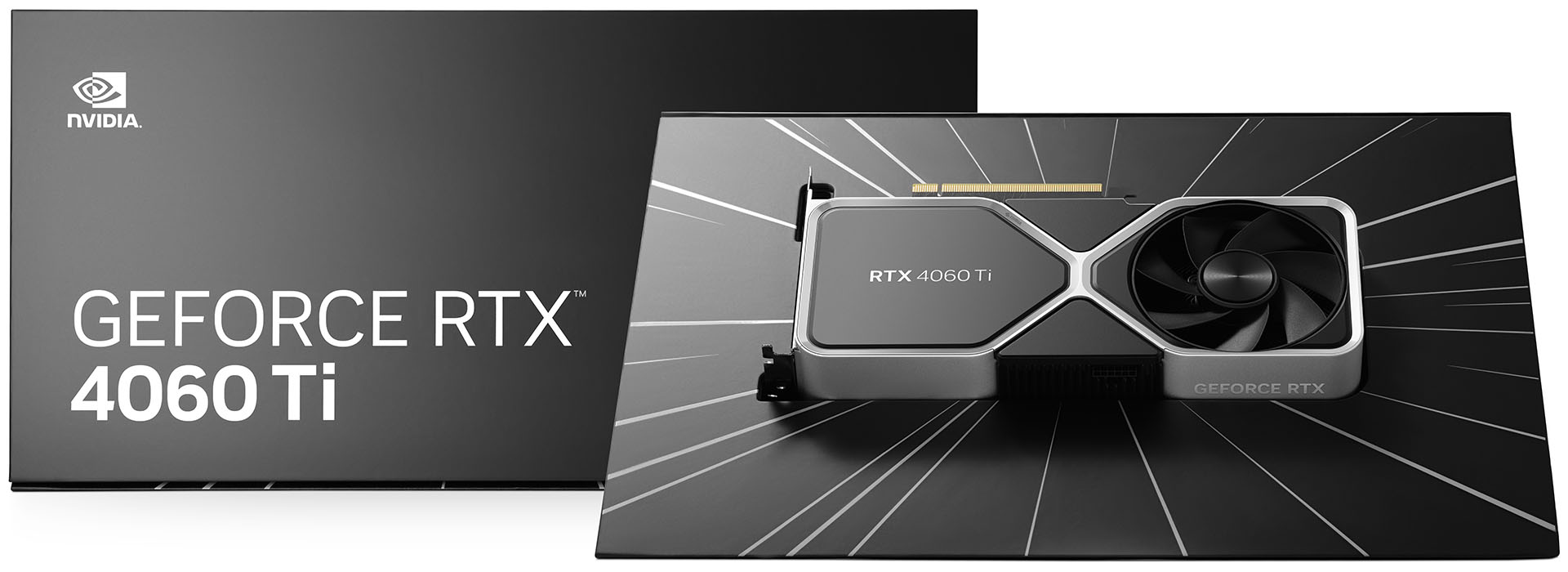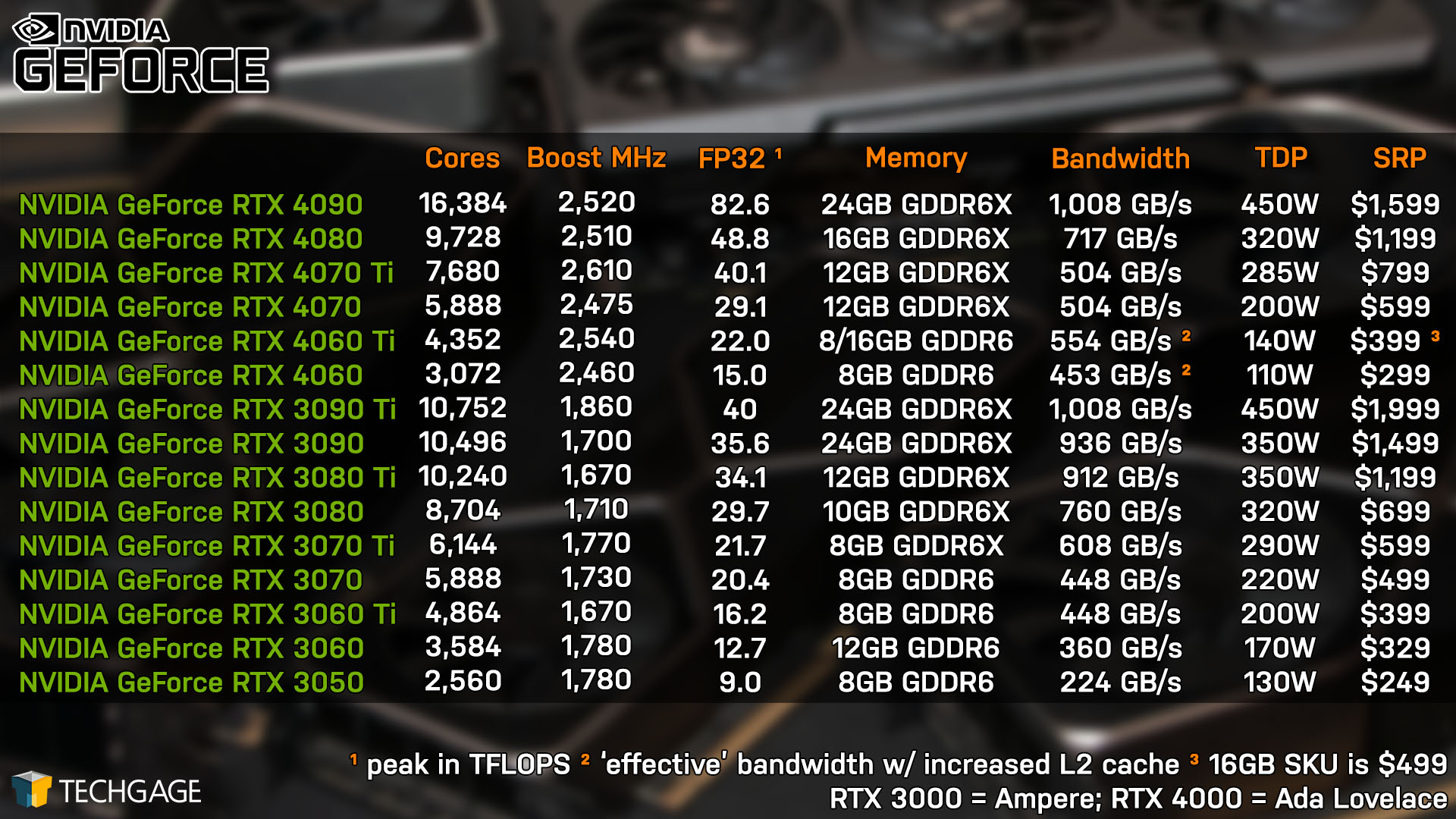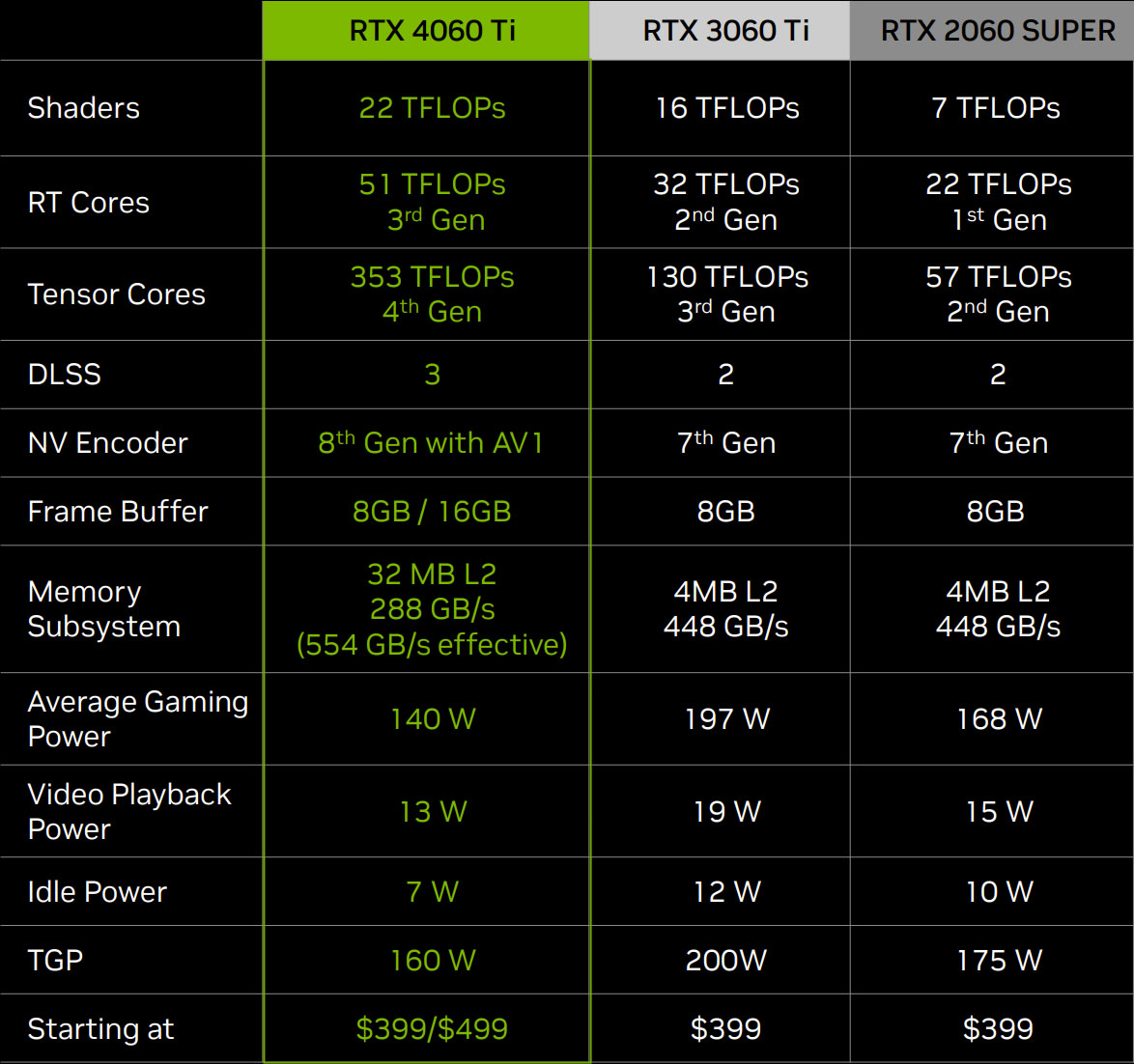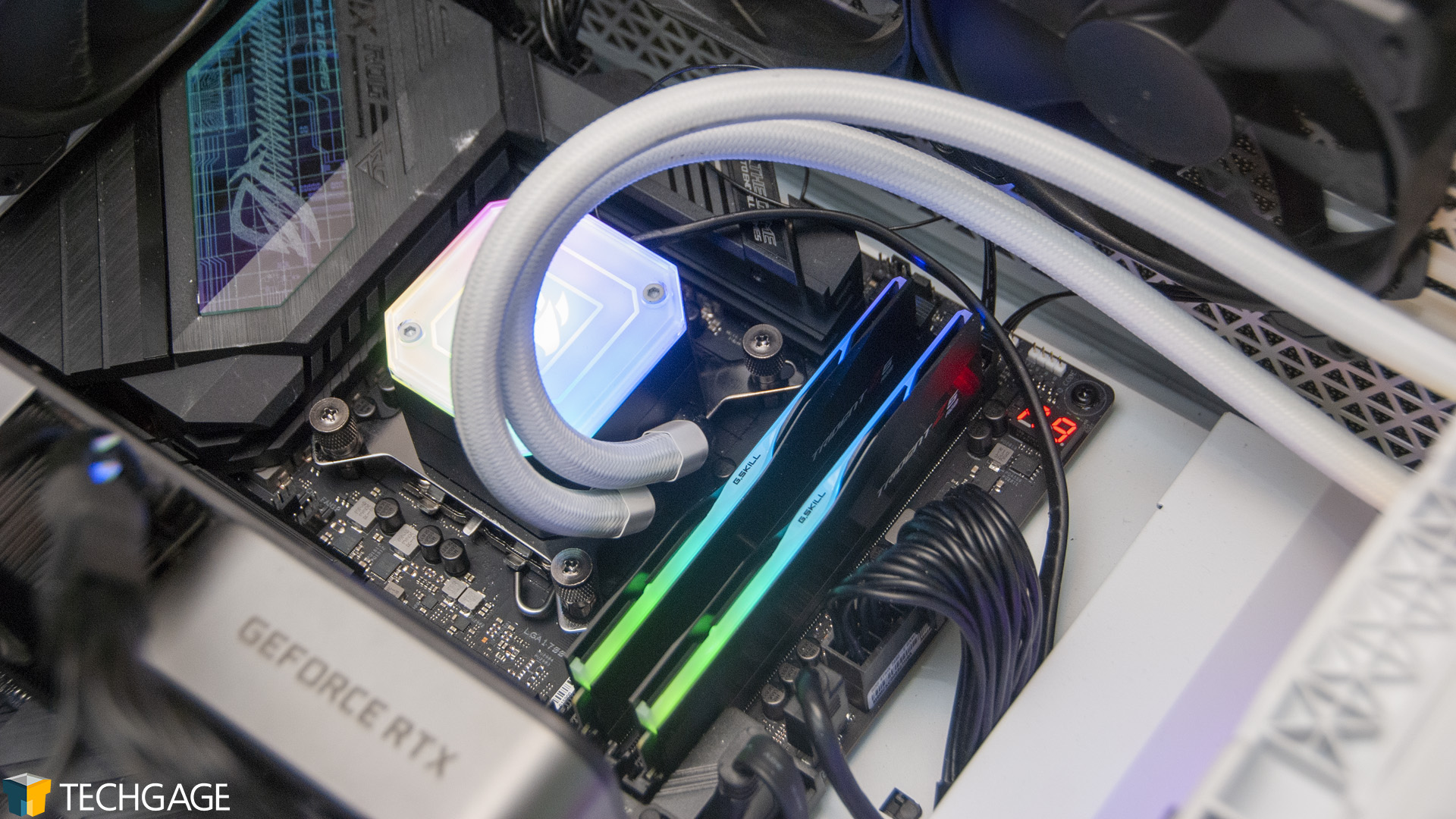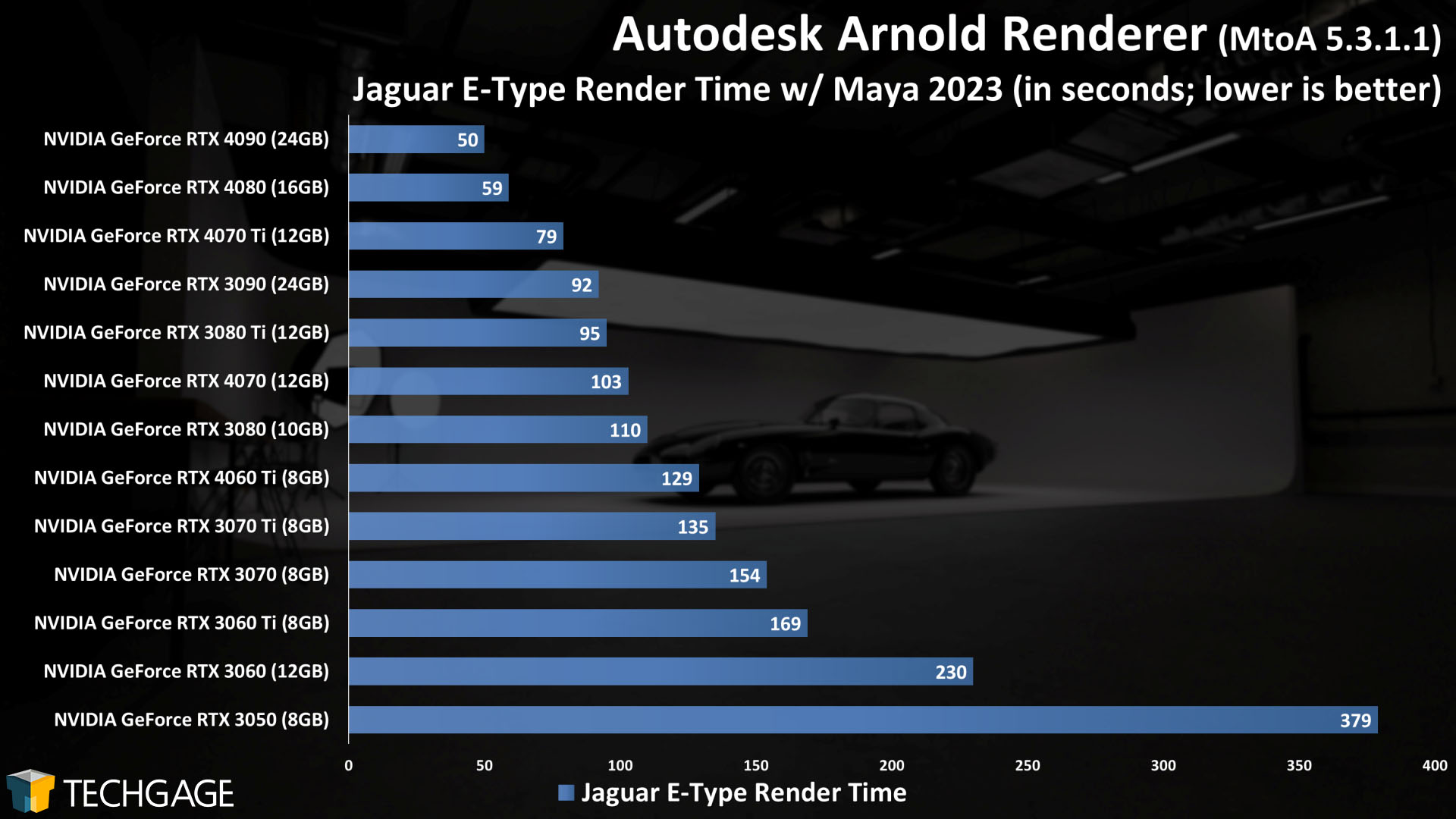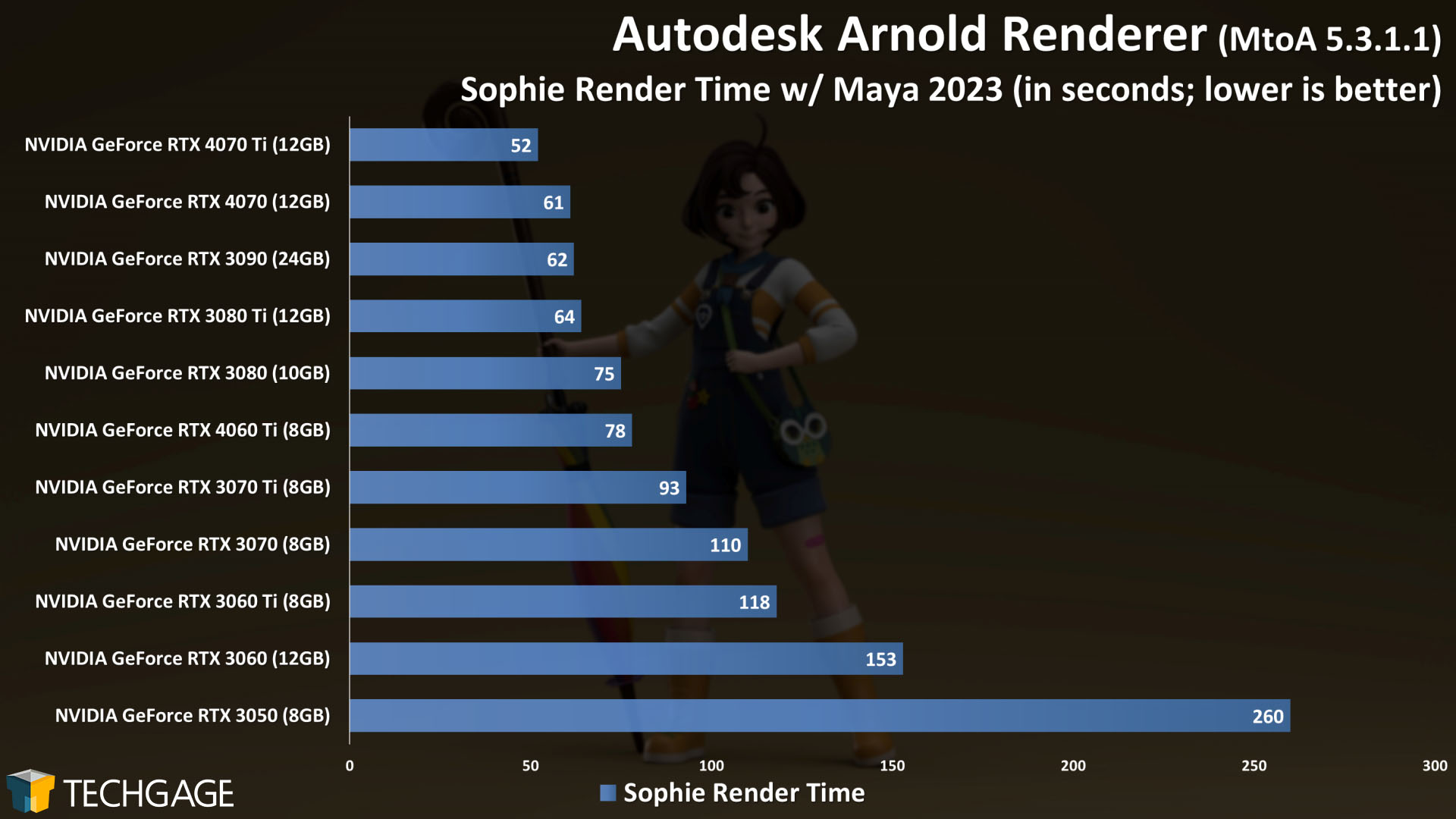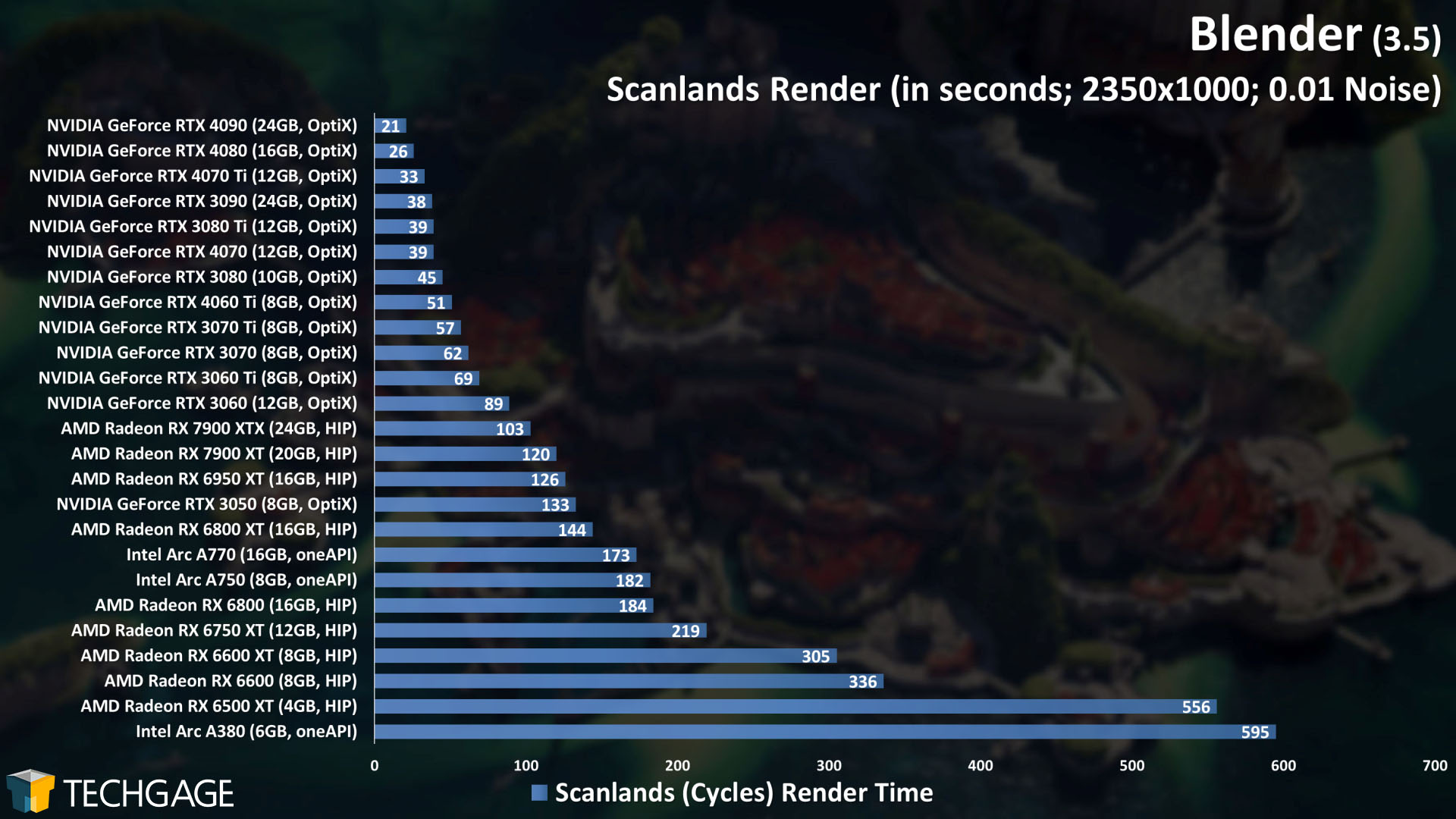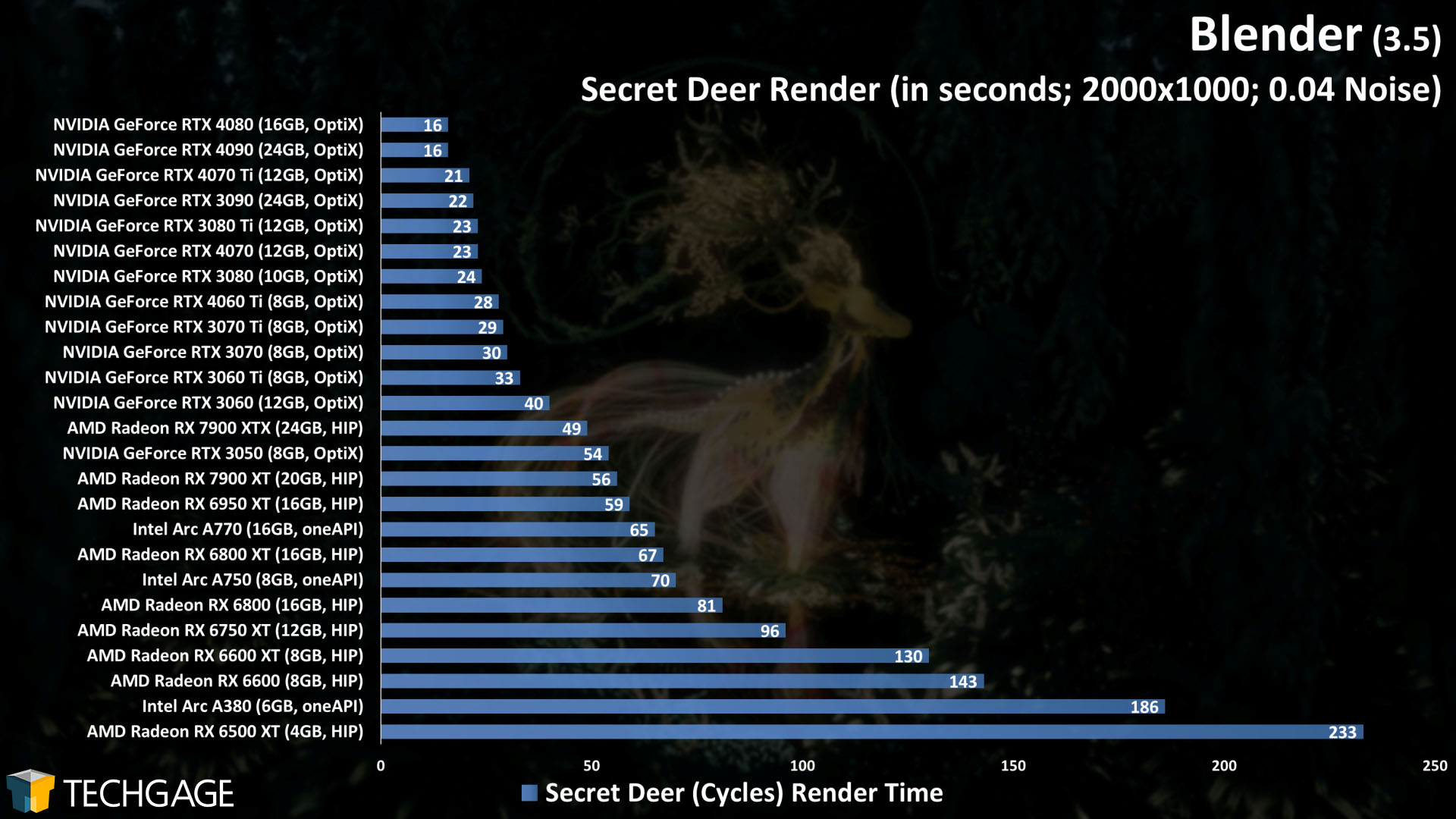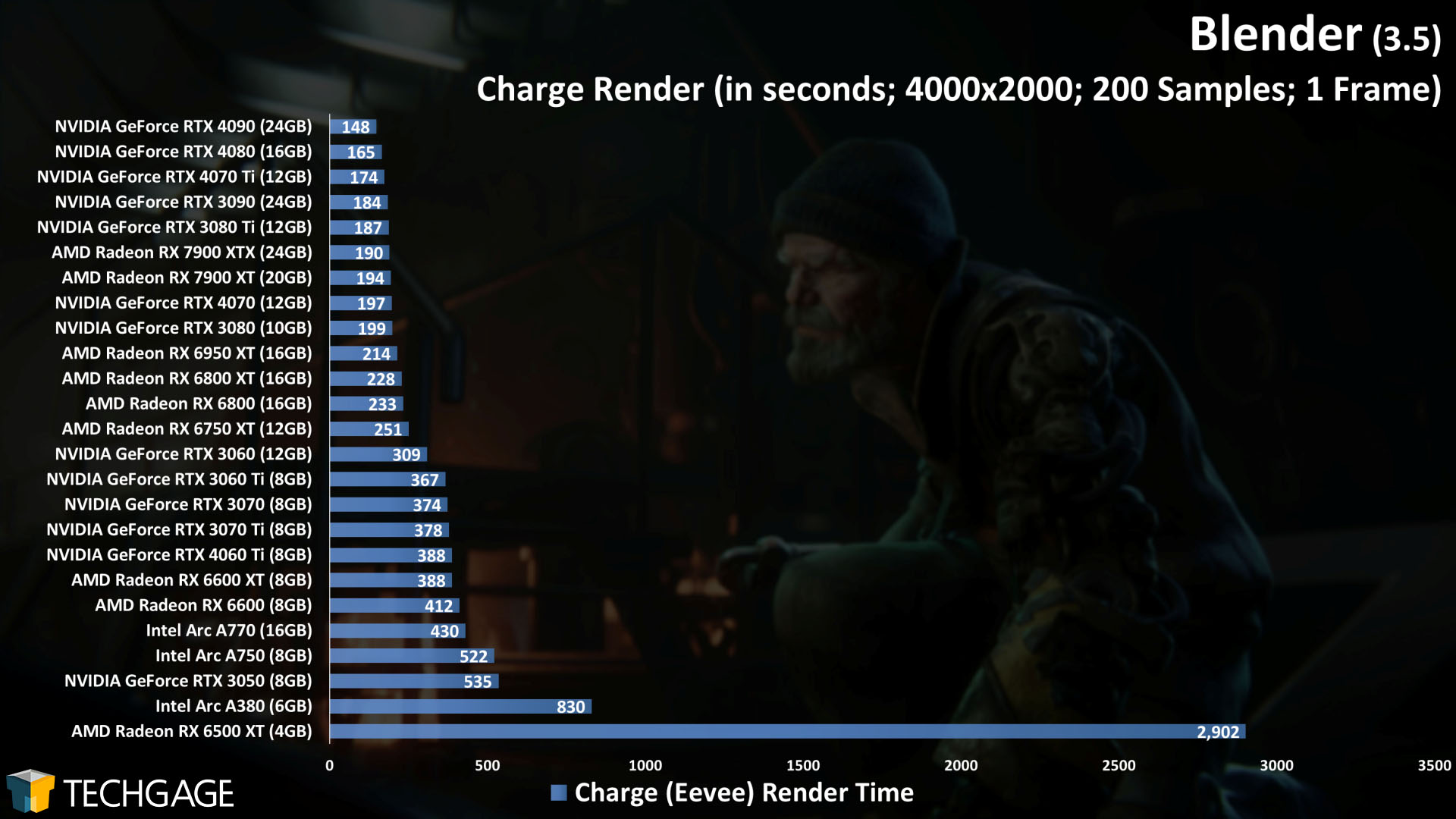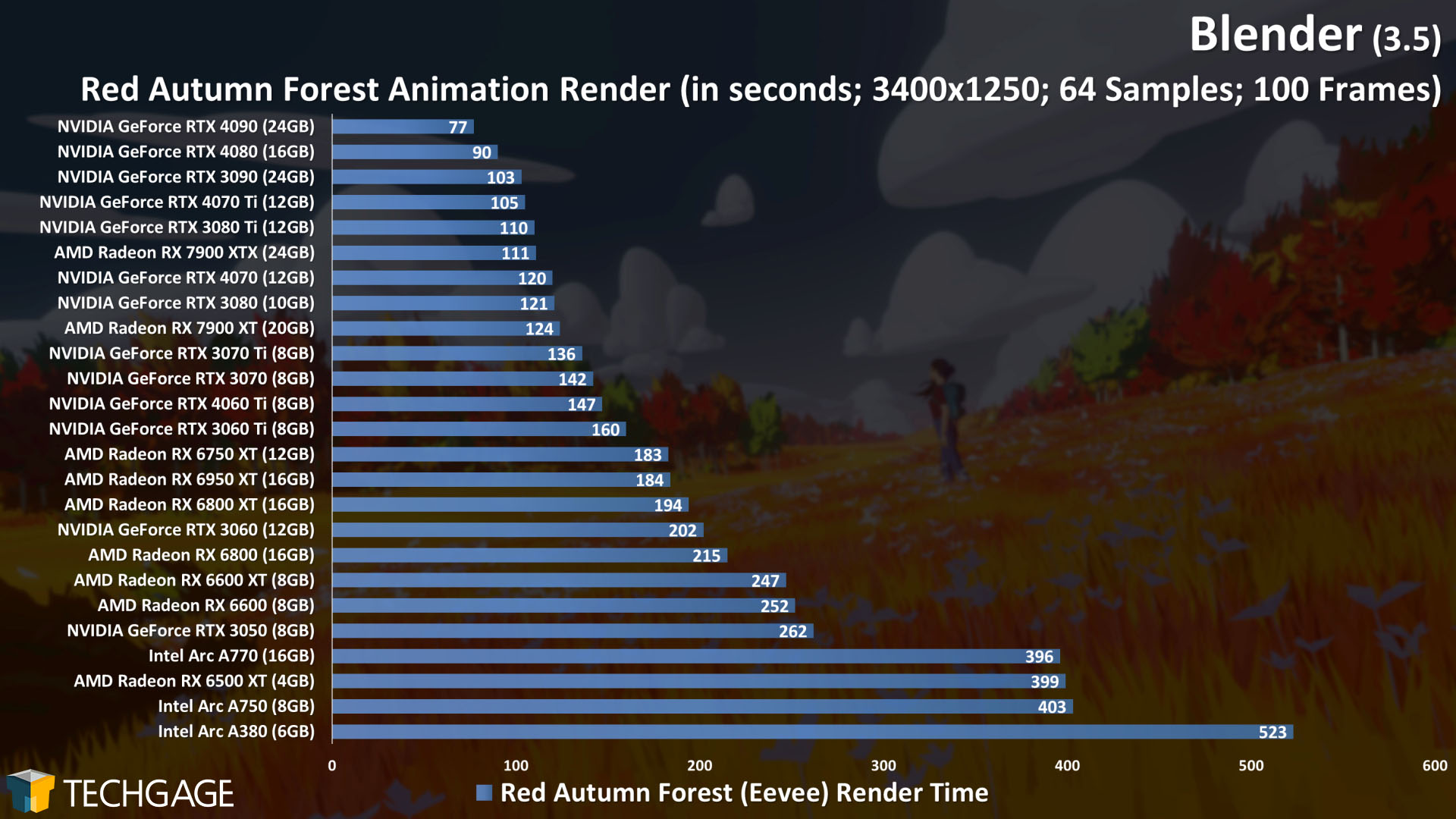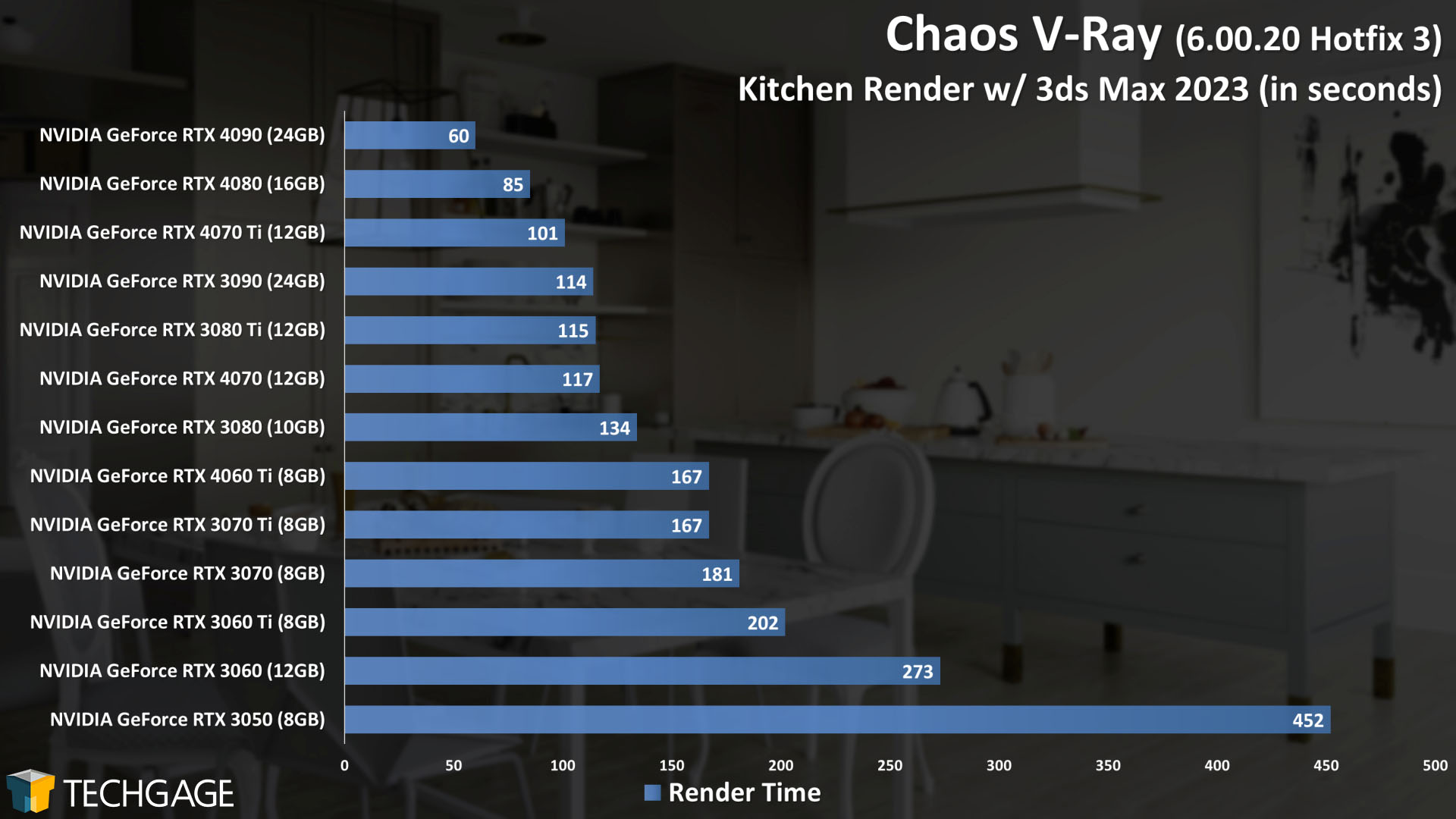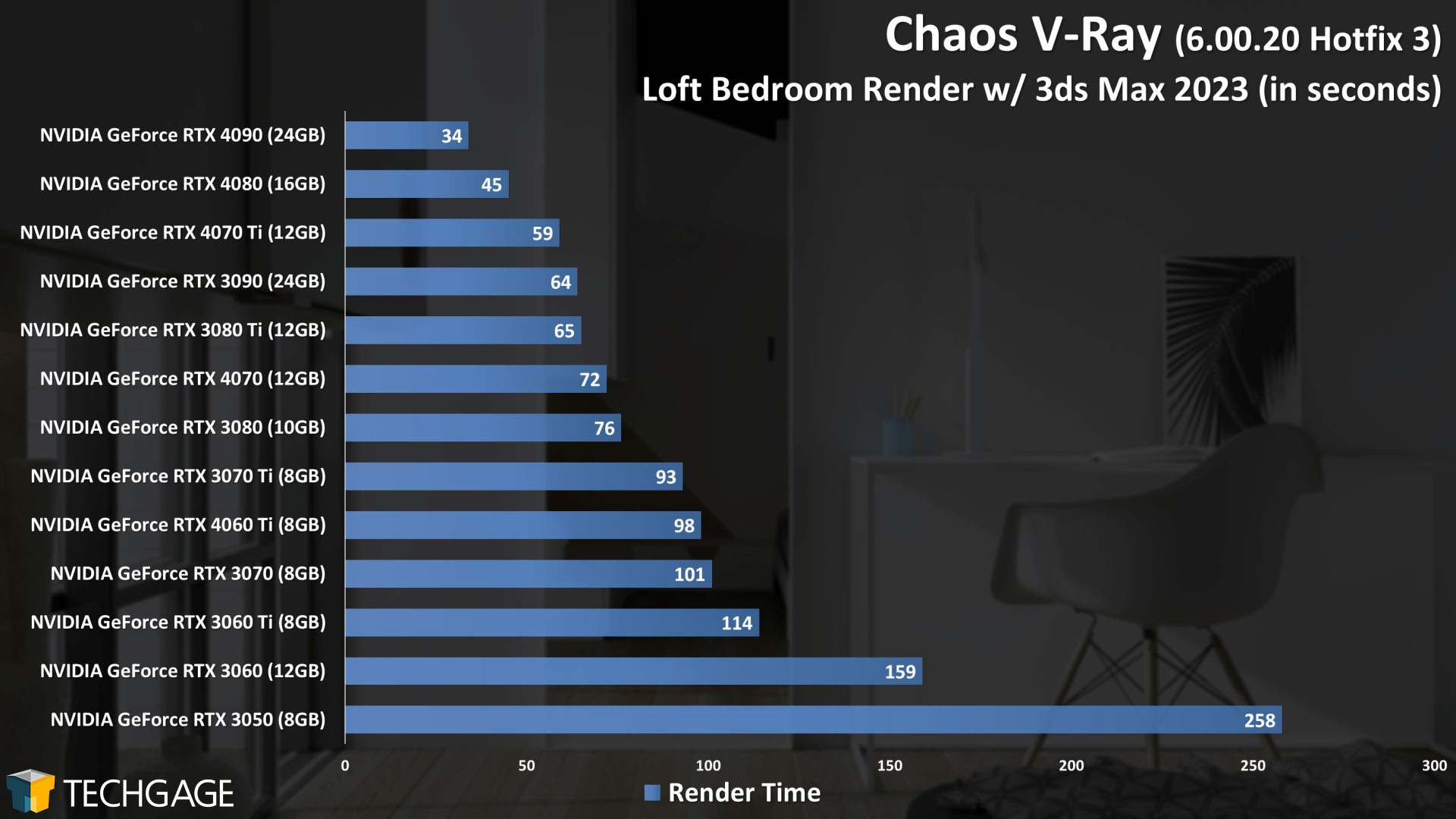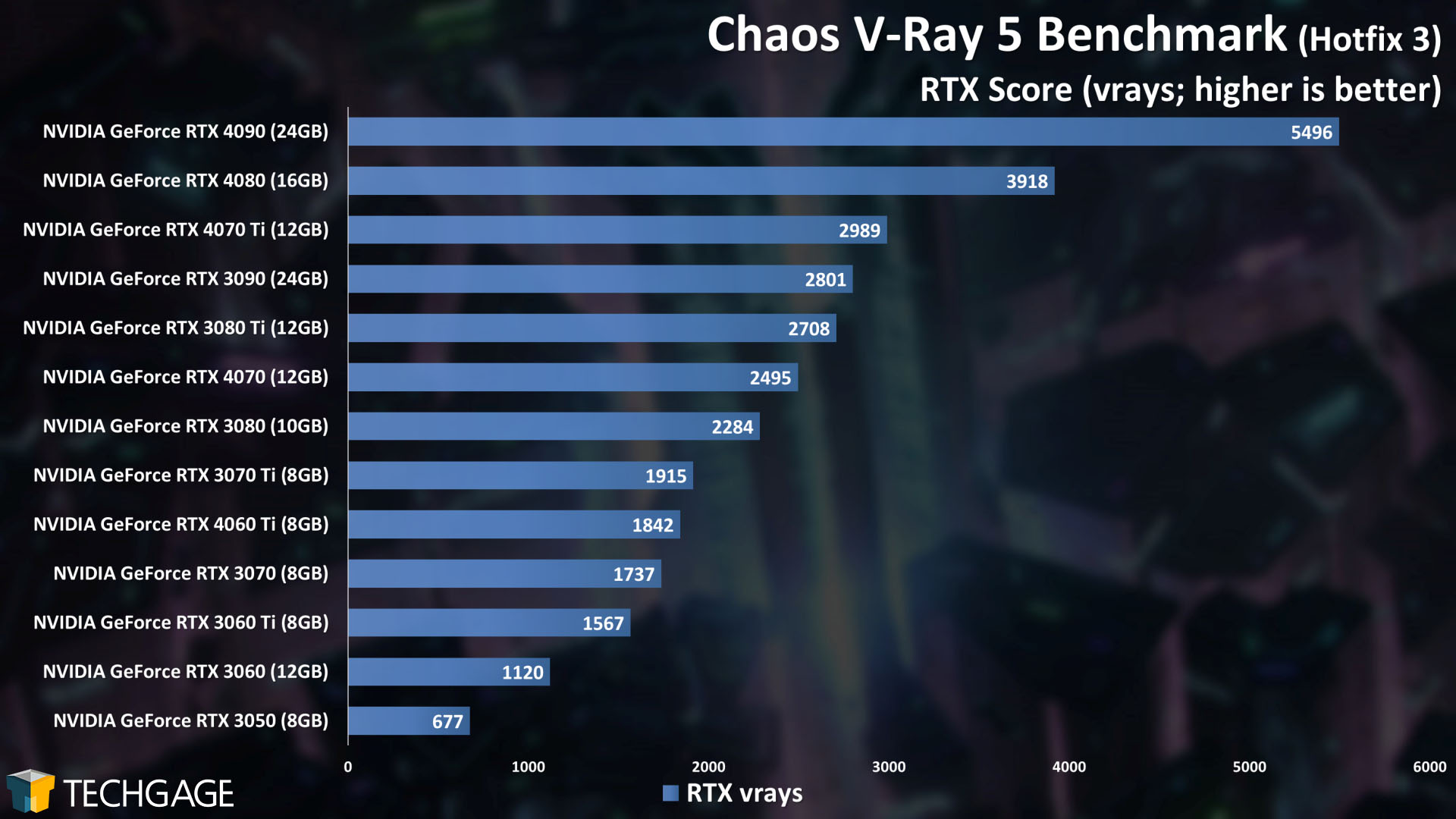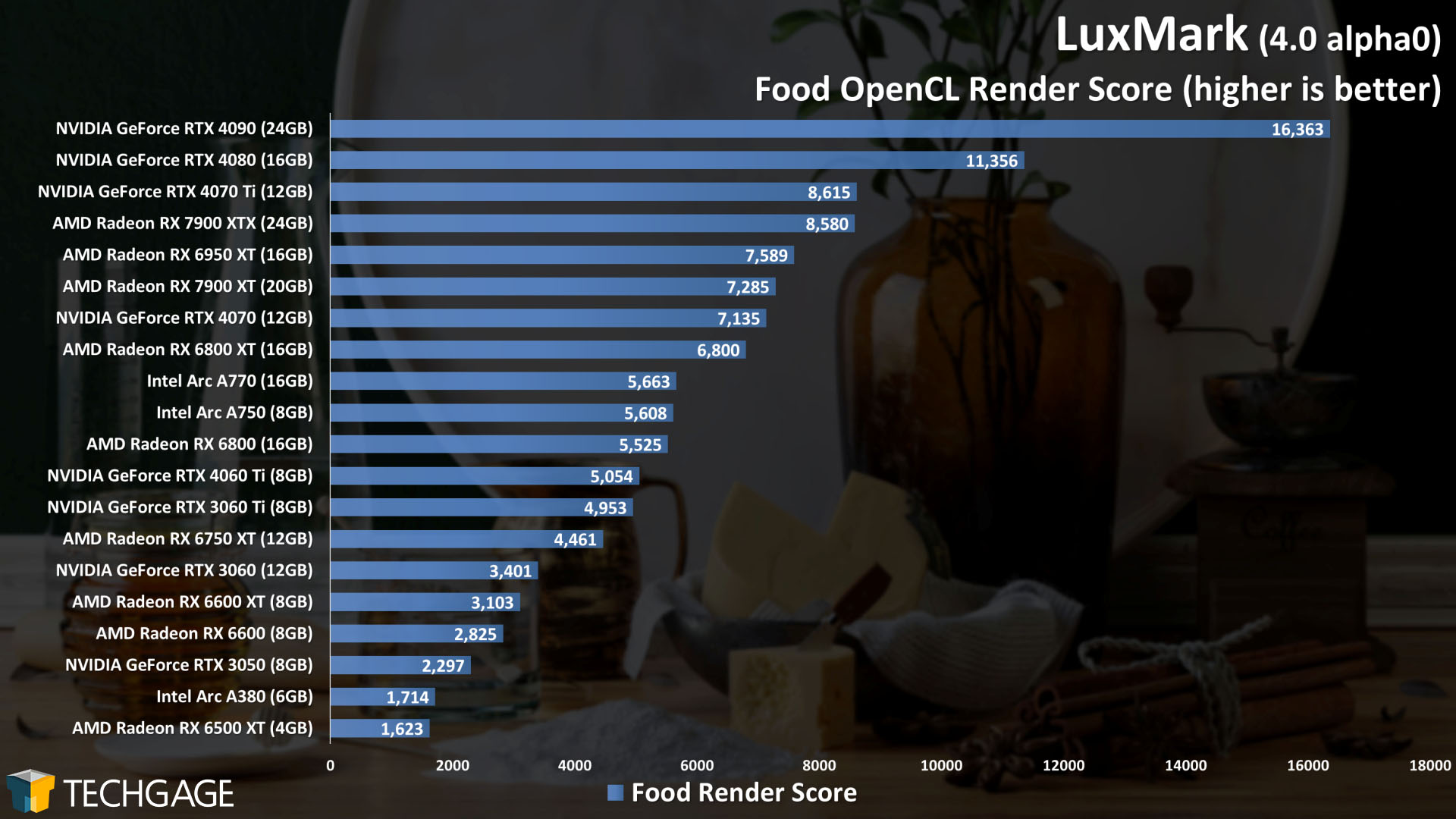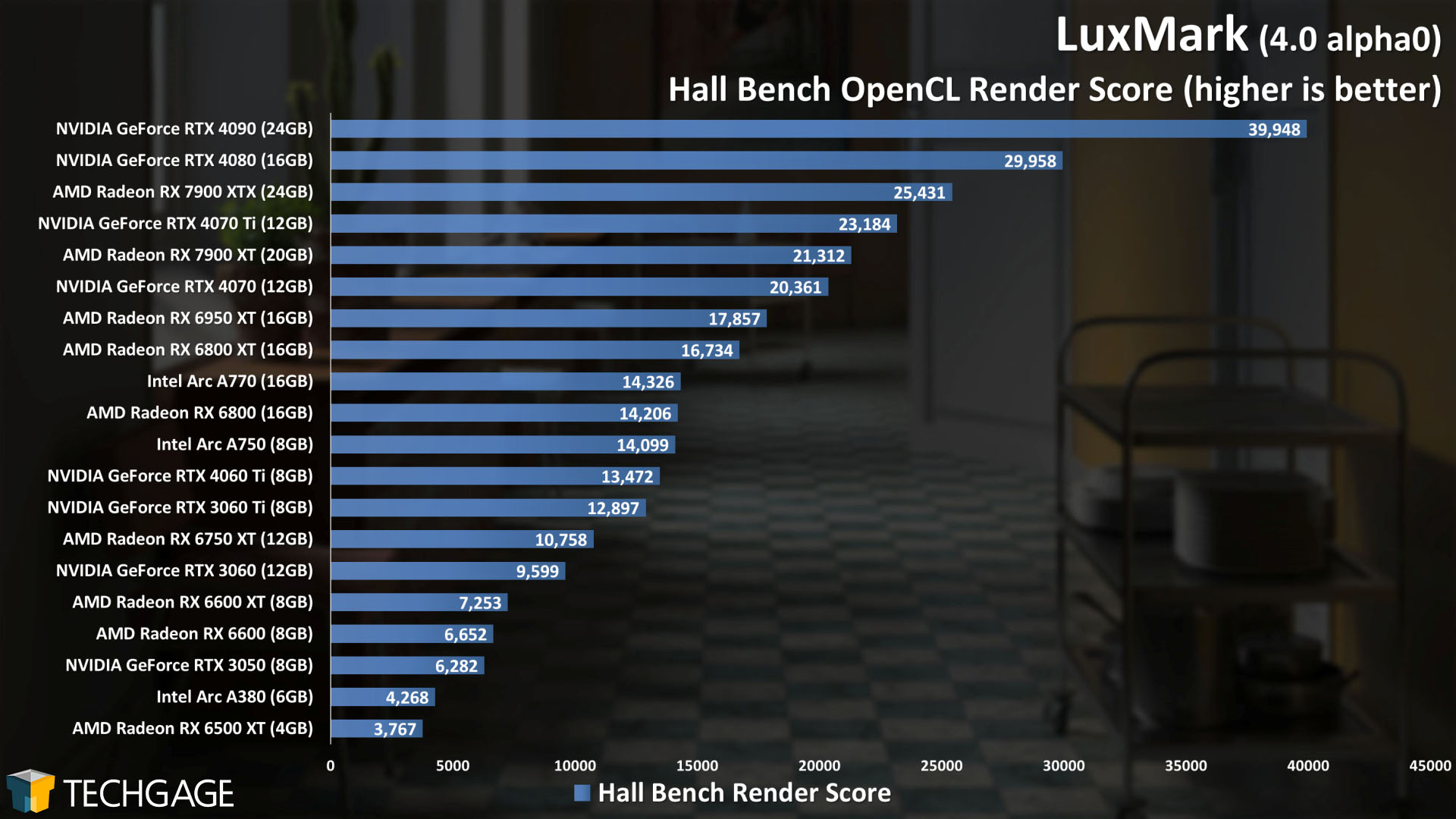- Qualcomm Launches Snapdragon 4 Gen 2 Mobile Platform
- AMD Launches Ryzen PRO 7000 Series Mobile & Desktop Platform
- Intel Launches Sleek Single-Slot Arc Pro A60 Workstation Graphics Card
- NVIDIA Announces Latest Ada Lovelace Additions: GeForce RTX 4060 Ti & RTX 4060
- Maxon Redshift With AMD Radeon GPU Rendering Support Now Available
NVIDIA GeForce RTX 4060 Ti 8GB Creator Review
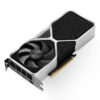
NVIDIA has just launched its fifth GeForce to join the Ada Lovelace generation: RTX 4060 Ti. As usual, we’re going to kick off our coverage with a look at NVIDIA’s latest across a wide-range of creator workloads, involving rendering, encoding, photogrammetry, and of course, viewport.
Page 1 – NVIDIA GeForce RTX 4060 Ti: Introduction & Rendering
As NVIDIA announced last week, it’s going to spend some time these next two months filling in some of the bottom-end of its current-gen Ada Lovelace GeForce lineup. Today, the company lifts the performance embargo for its GeForce RTX 4060 Ti 8GB, with market availability expected tomorrow. In July, the lineup will expand to seven models, with a 16GB version of the RTX 4060 Ti offered, as well as the next step below: RTX 4060.
The RTX 4060 Ti being made available in both 8GB and 16GB forms is happening at an interesting time, as a debate on whether or not 8GB if suitable for a circa-2023 GPU has gained momentum recently. While much of the commotion revolving around this issue seems to focus on gaming, not having sufficient GPU memory could be even more of a detriment on the creator side.
As we like to say, “it pays to know your workload”. If your projects are not overly complex, then having an 8GB framebuffer likely won’t be an issue. But if you don’t like skimping on scene settings, that same framebuffer could quickly turn into a problem.
In our recent Blender 3.5 deep-dive, we saw the RTX 3060 12GB render the Charge splash screen scene faster than the RTX 3070 Ti 8GB. We’ve even seen the same RTX 3060 12GB beat out the RTX 3070 Ti 8GB in Adobe Lightroom, so… this is the time to decide whether or not 8GB is going to be sufficient enough to “future-proof” your workstation. If you like what you see from the RTX 4060 in the coming results, but demand more VRAM, then you can hold out for the upcoming 16GB variant.
Here’s an updated view of NVIDIA’s current GeForce lineup, with the last-gen Ampere-based GeForces added in for easier upgrade path comparisons:
Based on the single-precision performance alone, the RTX 4060 Ti 8GB is most comparable to the last-gen RTX 3070 Ti 8GB, for a $100 lower price. That said, there are some caveats that are not immediately made clear with a simple specs table. The memory bus on the RTX 4060 Ti is 128-bit, down from 256-bit on a comparable previous-gen GPU. Despite that, the memory bandwidth spec of 554 GB/s makes it almost on par with the RTX 3070 Ti.
This itself breeds its own caveats. The real value of memory bandwidth on both the RTX 4060 Ti and RTX 4060 is about half of what’s reported the table above. Because of architecture optimizations, and a far larger L2 cache (32MB, or 8x), NVIDIA claims that the effective value is what’s reflected here. We’ve had so many benchmarks to run in the past two weeks, that we haven’t had a chance to single out a performance test for that specific attribute yet, but what ultimately matters is the real-world performance we’ll see in the many performance charts ahead.
As with most GeForce launches in recent years, the company highlights the benefits its RTX 4060 Ti could offer both gamers and creators alike. With gaming a big focus, the company draws attention to its DLSS 3 upscaling feature, in particular the Frame Generation addition. With FG, a game’s frame rate can be dramatically improved, which is a welcome sight for high-refresh displays, but works best when the baseline FPS (before Frame Generation, but not DLSS) is high enough to make it so input latency doesn’t become an issue.
Upscaling via the likes of DLSS isn’t common on the creator side yet, but NVIDIA recently drew our attention towards D5 Render, which not just supports NVIDIA’s upscaling, but even Frame Generation. This is something we hope to see become more common, because if there’s one spot in a design application that could generally use a performance boost, it’s the interactive viewport.
With that covered, if you’re familiar with NVIDIA’s Ada Lovelace generation, then there’s probably not too much you don’t already know about it. So, with that said, let’s get the ball rolling on examining some test results, but first – a look at our test setup.
| Techgage Creator GPU Testing PC | |
| Processor | Intel Core i9-13900K (3.0GHz, 24C/32T) |
| Motherboard | ASUS ROG STRIX Z690-E GAMING WIFI CPUs tested with 2305 BIOS (March 10, 2023) |
| Memory | G.SKILL Trident Z5 RGB (F5-6000J3040F16G) 16GB x2 XMP-enabled w/ freq. set to DDR5-6000 (30-40-40-96, 1.35V) |
| AMD Graphics | AMD Radeon RX 7900 XTX (24GB; Adrenalin 23.4.1) AMD Radeon RX 7900 XT (20GB; Adrenalin 23.4.1) AMD Radeon RX 6950 XT (16GB; Adrenalin 23.4.1) AMD Radeon RX 6800 XT (16GB; Adrenalin 23.4.1) AMD Radeon RX 6800 (16GB; Adrenalin 23.4.1) AMD Radeon RX 6750 XT (12GB; Adrenalin 23.4.1) AMD Radeon RX 6600 XT (8GB; Adrenalin 23.4.1) AMD Radeon RX 6600 (8GB; Adrenalin 23.4.1) AMD Radeon RX 6500 XT (4GB; Adrenalin 23.4.1) |
| Intel Graphics | Intel Arc A770 (16GB; Arc 31.0.101.4311) Intel Arc A750 (8GB; Arc 31.0.101.4311) Intel Arc A380 (6GB; Arc 31.0.101.4311) |
| NVIDIA Graphics | NVIDIA GeForce RTX 4090 (24GB; Studio 531.61) NVIDIA GeForce RTX 4080 (16GB; Studio 531.61) NVIDIA GeForce RTX 4070 Ti (12GB; Studio 531.61) NVIDIA GeForce RTX 4070 (12GB; Studio 531.61) NVIDIA GeForce RTX 4060 Ti (8GB; Beta 531.93) NVIDIA GeForce RTX 3090 (24GB; Studio 531.61) NVIDIA GeForce RTX 3080 Ti (12GB; Studio 531.61) NVIDIA GeForce RTX 3080 (10GB; Studio 531.61) NVIDIA GeForce RTX 3070 Ti (8GB; Studio 531.61) NVIDIA GeForce RTX 3070 (8GB; Studio 531.61) NVIDIA GeForce RTX 3060 Ti (8GB; Studio 531.61) NVIDIA GeForce RTX 3060 (12GB; Studio 531.61) NVIDIA GeForce RTX 3050 (8GB; Studio 531.61) |
| Storage | WD Blue 3D NAND 1TB x3 (SATA 6Gbps) |
| Power Supply | Corsair RM1000x (1000W) |
| Chassis | Corsair 4000X Mid-tower |
| Cooling | Corsair H150i ELITE CAPELLIX (360mm) |
| Et cetera | Windows 11 Pro 22H2, Build 22621 Intel Chipset Driver: 10.1.19222.8341 Intel ME Driver: 2242.3.34.0 |
| All product links in this table are affiliated, and help support our work. | |
All of the benchmarking conducted for this article was completed using an up-to-date Windows 11 (22H2), the latest Intel chipset driver, as well as the latest (as of the time of testing) graphics driver.
Here are some general guidelines we follow:
- Disruptive services are disabled; eg: Search, Cortana, User Account Control, Defender, etc.
- Overlays and / or other extras are not installed with the graphics driver.
- Vsync is disabled at the driver level.
- OSes are never transplanted from one machine to another.
- We validate system configurations before kicking off any test run.
- Testing doesn’t begin until the PC is idle (keeps a steady minimum wattage).
- All tests are repeated until there is a high degree of confidence in the results.
This RTX 4060 Ti review embargo wasn’t the only one we’ve been gunning to hit this week, so in lieu of the usual commentary after each set of results, we’re going to just comment on them all at the end of the page. This first page is catering to rendering, while the next, and final page tackles encoding, photogrammetry, and viewport.
Please note that not all performance graphs include the exact same set of GPUs. Planning for multiple embargoes led to disjointed benchmarking, so the RTX 3070~3090 didn’t make it into all. NVIDIA’s current-gen lineup is considered to be RTX 3050 ~ 3060 (4060 once that’s released), and RTX 4060 Ti ~ RTX 4090, so we’ve ensured those are all included.
Autodesk Arnold
Blender
Chaos V-Ray
LuxMark
Overall, NVIDIA’s GeForce RTX 4060 Ti proves to be a bit faster than the last-gen RTX 3070 Ti, which retailed for $100 more. The next step up is the RTX 4070, which does improve rendering times considerably in some cases, but it’s up to a given user to decide whether that performance uplift is worth the 50% higher cost.
We talked earlier about the growing concern of an 8GB framebuffer not being big enough for the long-haul, and it does seem clear, when looking at some projects, that those who develop complex projects should aim higher. The 8GB RTX 4060 Ti rendered Blender’s Charge project in 388 seconds, whereas the last-gen (and lower-end) RTX 3060 12GB managed it in 309 seconds. The 12GB RTX 4070 almost halves the 4060 Ti’s time, from 388 to 197 seconds.
One thing to note is that projects like Charge are not typical; they’re complex in design and weighty in demands because that’s how the creator wanted to build it. If your projects are not what you’d consider complex, then 8GB will get you by. But when it comes to choosing a GPU to last you a few years, you don’t want to go 8GB and then run into a roadblock before you’d expect it.
Support our efforts! With ad revenue at an all-time low for written websites, we're relying more than ever on reader support to help us continue putting so much effort into this type of content. You can support us by becoming a Patron, or by using our Amazon shopping affiliate links listed through our articles. Thanks for your support!




